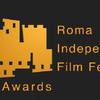“Lettera alla mia terra”. Beauty and Hell for Roberto Saviano
The festival opened with two international writers, American Andrew Sean Greer and Italian Margaret Mazzantini, who was accompanied by the actor Sergio Castellitto for a reading from her most recent book. As usual, each reading is from an unpublished work and this criterion has characterized the event since it was established eight years ago.
While the books were written in two very different styles and languages, they frequently blended into each other, creating a somewhat taxing experience for the audience.
As the artistic director Maria Ida Gaeta explained, this year the literary festival sought to commemorate the 40th anniversary of Neil Armstrong’s walk on the moon in an unusual way: through literature. Each reading was accompanied by electronic musical performances, as well as soundtracks and promotional trailers produced especially for each work.
Among the many authors who presented their work, Roberto Saviano’s reading on June 30 was noteworthy. He was again present at this year’s festival to share his new book while he witnessed the power of his own words.
The Massenzio Basilica was already crowded at 6 p.m. even though the readings did not begin until 9 p.m. People braved long lines for an opportunity to hear the young writer Roberto Saviano, who has been escorted by police officers since the release of his mafia exposé Gomorrah in 2006.
Something occurred the moment he took the stage: the charming patina that the festival has always brought with it suddenly dissolved and the true message and gravity of his words were revealed.
Roberto burst into a two-hour reality tale while the photographer Alberto Giuliani presented the various faces of mafia women and madonnas whose role in organized crime is well-defined. Women and religious symbols, especially the Virgin Mary, have been manipulated as objects and used as instruments by men involved in the mafia or the camorra, and whose status has been supported by the mafia’s social and cultural framework. Saviano’s bodyguards stayed close by to protect him and nothing escaped from their sight, not even the flash of a camera. They also tried to give him room, trying not to create a barrier for Roberto who was deeply moved by the reception. With the look of a neophyte, he watched in astonishment as people came to see him. It’s hard to reconcile his visible embarrassment as he nervously rubbed his head, with his rich, detailed, and weighty narrative full of nuance and meaning.
After reading the introduction to his last book (La bellezza e l’Inferno: scritti 2004-2009) one could easily understand all of it: “[…] engraving a word onto the world,  passing it on to someone like a ticket or underground information. Once you have read it, you learn it by heart and then destroy it […] Writing is an act of resistance. […]” He dedicated his new book, written during the years he spent in the shadows, to his readers who have followed and supported him. They have allowed his words to live, despite the danger as shown by the latest mafia trials.
passing it on to someone like a ticket or underground information. Once you have read it, you learn it by heart and then destroy it […] Writing is an act of resistance. […]” He dedicated his new book, written during the years he spent in the shadows, to his readers who have followed and supported him. They have allowed his words to live, despite the danger as shown by the latest mafia trials.
A collection of editorials, tales, and articles (some have appeared in national and international journals and newspapers such as La Repubblica, L’Espresso, and El Paìs) written down while he was escorted through narrow and various places. Each describe the two opposing aspects of his life since Gomorrah was published: the hell of what he saw and continues to see and the beauty of the art itself that he uses so that he can be a fair and accurate witness.
One piece in particular entitled “Letter to My Country” first appeared in September 2008 in La Repubblica and takes the form of a long, grieving message to Italy. It’s a chain of facts, murders, ambushes, and abuses connected by obsessive rhetorical questions that can be summed up with one: How is this still possible? How can my people accept this day after day?
Roberto wrote his reply as he awaits imaginary readers, leaders, citizens, and the entire country to give theirs. For him, writing is as a form of resistance; it’s resistance against those who sling mud and who accuse him of “getting rich off his books,” and resistance against those who incessantly claim that “it’s not just Italy!” even though that aspect of Italy continues to grow.
During the reading, Roberto took the opportunity to criticize several positions that the government has maintained, such as prohibiting phone taps (although this has hardly deterred the President of the Republic, even temporarily) and the harsh laws against mafia criminals called “41 bis” which were enacted after judge Falcone’s assassination. He also condemned the recent laws passed by the government against illegal immigrants. In one piece entitled “Miriam Makeba: The Brotherhood Rage,” Roberto recalled the slaughter of six Africans in Castelvolturno which had nothing to do with criminal activity. With help from the Nigerian mafia, the camorra used the murder of six innocent people as a way to send a message to those immigrants who remain.
The extended applause that welcomed Roberto at the beginning and thanked him at the end seemed to accompany him throughout his long subterranean journey. It’s long overdue recognition from the festival’s audience as well as a tribute to our needy country.







































i-Italy
Facebook
Google+
This work may not be reproduced, in whole or in part, without prior written permission.
Questo lavoro non può essere riprodotto, in tutto o in parte, senza permesso scritto.